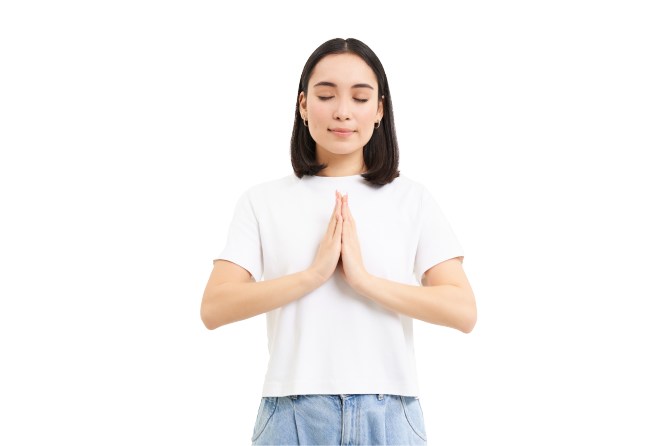Ayurvedic medicine, also known as Ayurveda, is based on the principle of establishing a permanent balance that must be maintained in order to stay healthy. Much more than a medicine, Ayurveda is an art of living that seeks harmony in a person's environment.
According to this science, imbalances are at the origin of diseases, different symptoms or discomforts. Ayurveda is thus presented as a technique to restore balance in the body through a healthy lifestyle. It uses plant formulas and various natural remedies. Several complementary disciplines are grouped together: herbal medicine, breathing, massage, aromatherapy, yoga or even singing... so many good habits to put in place or good reflexes to follow to fully benefit from the numerous advantages of this art of living: elimination of toxins, reduction of stress, improvement of blood circulation... Zoom on this ancestral practice.
Its history
Ayurveda is translated as "science of life". Derived from the Sanskrit, the ancestral Indian language, "Ayur" has the meaning of "life, longevity" and "Veda" has the concept of "knowledge, science".
Ayurveda appeared several thousand years ago in India. This art of living is said to be derived from a set of sacred texts called Veda, which were written, for the oldest, about 2,000 years before Jesus Christ.
One of the pillars of Ayurveda is the medical treatise Charaka Samhita, it is an ancient Vedic text exposing a first knowledge of medicine and its practice. This treatise is based on the fact that a healthy lifestyle can bring harmony to a man with his environment. It also emphasizes that food and digestion have an impact and a strong correlation with health. Furthermore, disease is said to be caused by nutritional errors, inappropriate behaviors, a lack of knowledge of the laws of the universe and a lack of harmony between body and mind. This medical treatise emphasizes, among other things, that the treatment can be medicinal (plants, minerals, etc.) and/or verbal and that it is as much preventive as curative.
All these principles are found today in the bases of Ayurvedic medicine, recognized by the WHO (World Health Organization). It considers the individual in his or her entirety, on the psychological, emotional and physical levels. This art of living claims a healthy and preventive way of life allowing to heal both the body and the mind.
The principle of the doshas
Ayurveda considers that each human being (infinitely small) is linked to the planets and galaxies (infinitely large). It is also based on the principle that the 5 elements of nature can be found in man.
The doshas are thus the basis of the Ayurvedic constitution. They are based on the 5 fundamental elements: fire, water, earth, air and ether (or space).
As in traditional Chinese medicine, Ayurvedic medicine considers that these elements represent flow, movement, space, solidity and heat. From these 5 elements are formed the 3 "doshas" namely: dosha pitta (fire), dosha vata (air) and dosha kapha (water). Symbolizing the moods and vital energies, the doshas are considered responsible for the psychic and physical functioning. There is a combination of these elements in the constitution of each individual.
Ayurveda helps to treat the imbalance of these 3 doshas. To relieve a pathology, it is therefore necessary to restore the balance between them.
What is Ayurvedic medicine?

Sister science of yoga, Ayurvedic medicine is a form of traditional, holistic, Indian medicine. It seeks the well-being of the individual and thus allows to prevent all kinds of ills. Widely spread in India and Sri Lanka, this art of living is based on the harmony of mind and body.
The Ayurvedic concept considers that the human body has the same functioning as nature and the world. All human beings are born with their own constitution which reflects their personal state of balance, called "Prakriti". This balance can become unbalanced and lead to ailments.
Ayurvedic medicine is based on the prerequisite of knowing one's birth constitution, one's Prakriti, in order to diagnose imbalances in the mind and body.
This is why it is necessary to carry out a complete Ayurvedic assessment in order to regain or maintain a state of health and balance and a better vital energy. This assessment takes stock of a person's birth constitution and the imbalances that have been created during the different stages of life. Personalized techniques are then proposed to restore or maintain harmony. These may include advice on lifestyle, diet, massage, yoga, breathing techniques, meditation exercises...
The most used ayurvedic plants
To help a human being to find balance in his body and to heal him, Ayurvedic medicine uses nearly 7000 plants. In the Indian pharmacopoeia, all the medicinal and aromatic plants have virtues that allow them to heal a sick person. Here are some examples of Ayurvedic plants:
- Amla or Amalaki: a regenerating and antioxidant fruit;
- Centella Asiatica : to revive the cognitive functions;
- Manjistha: effective for hair care with a purifying action;
- Neem: Swiss Army knife of Ayurvedic medicine.

Ayurvedic plants can be used individually or in combination. They can be incorporated in your dishes, consumed as infusions or food supplements or applied as cosmetic products on the hair or skin.










